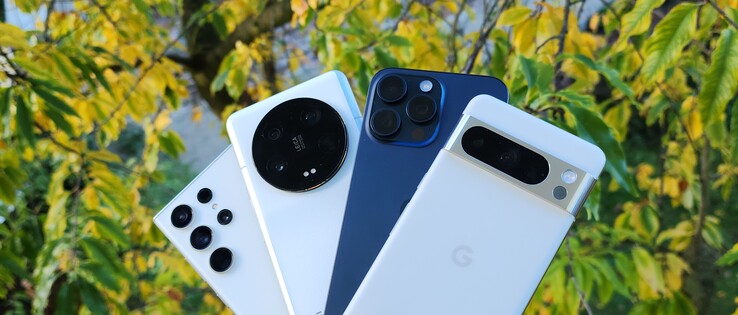Navigating the world of smartphones can feel like trying to find a specific grain of sand on Bondi Beach. With a constant influx of new models and features, it’s easy to get lost. But fear not! This guide is your trusty compass, designed to help you find the perfect smartphone in Australia, whether you’re a first-time buyer, upgrading from an old clunker, or seeking a phone for specific needs.
Introduction
Before we dive into the specifics, let’s map out the key factors to consider when choosing your ideal smartphone:
- Budget: How much are you willing to spend?
- Operating System: Do you prefer the flexibility of Android or the simplicity of iOS?
- Screen Size and Quality: How big a screen do you want, and how important is image quality and refresh rate?
- Camera Quality: Are you a budding photographer who needs a top-notch camera?
- Battery Life: How long do you need your phone to last on a single charge?
- Performance: Do you need a fast and powerful phone for gaming or demanding apps?
- Design and Durability: How important is the phone’s look and feel, and do you need it to be water-resistant?
- 5G Connectivity: Do you need the fastest mobile internet speeds?
Types of Smartphones
Smartphones cater to different needs. Here are some common categories:
- Best Overall: Flagship phones offering the best all-round experience (e.g., Samsung Galaxy S23 Ultra, iPhone 14 Pro Max).
- Best Budget: Affordable phones that don’t break the bank (e.g., Google Pixel 6a, Oppo A77).
- Best Camera: Phones with excellent cameras for capturing high-quality photos and videos (e.g., Google Pixel 7 Pro, Vivo X90 Pro).
- Best for Gaming: Phones with powerful processors and high refresh rate displays for smooth gaming (e.g., Asus ROG Phone 6, Nubia RedMagic 7S Pro).
- Best for Battery Life: Phones with long-lasting batteries for extended use (e.g., iPhone 14 Plus, Asus Zenfone 9).
Key Features and Specifications
Let’s decode the essential specs you’ll encounter:
- Operating System (OS):
- Android: Offers more customisation, a wider variety of phones, and generally more affordable options.
- iOS: Known for its simplicity, smooth performance, and a strong app ecosystem.
- Display:
- Screen Size: Measured diagonally in inches (e.g., 6.1 inches, 6.8 inches).
- Resolution: Higher resolution (e.g., Full HD+, Quad HD+) means a sharper image.
- Refresh Rate: Higher refresh rates (e.g., 90Hz, 120Hz) result in smoother scrolling and animations.
- Panel Types: AMOLED displays offer vibrant colours and deep blacks, while LCDs are more common in budget phones.
- Processor: The “brain” of your phone, determining its speed and performance. Look for phones with powerful processors from Qualcomm (Snapdragon), Apple (Bionic chips), or MediaTek (Dimensity).
- RAM: Random Access Memory, which affects how smoothly your phone runs apps and multitasks. More RAM (e.g., 6GB, 8GB, 12GB) is better.
- Storage: Internal storage (e.g., 128GB, 256GB) determines how much data you can store. Some phones still offer expandable storage via microSD cards.
- Camera:
- Megapixels: Higher megapixels generally mean more detail, but lens quality and image processing also matter.
- Aperture: A lower aperture number (e.g., f/1.8) lets in more light for better low-light photos.
- Sensor Size: Larger sensors capture more light and detail.
- Optical Image Stabilisation (OIS): Helps reduce blur in photos and videos.
- Optical Zoom: Allows you to zoom in on subjects without losing image quality.
- Camera Features: Look for features like Night mode, Portrait mode, and Macro mode for close-up shots.
- Battery:
- Battery Capacity: Measured in milliampere-hours (mAh). A higher number generally means longer battery life.
- Fast Charging: Look for phones with fast charging capabilities (e.g., 45W, 67W, 120W) for quick power top-ups.
- Wireless Charging: Some phones offer wireless charging for added convenience.
- Design and Durability:
- Size and Weight: Consider how comfortable the phone feels in your hand.
- Build Materials: Metal and glass designs generally feel more premium.
- Water Resistance: An IP rating (e.g., IP68) indicates the phone’s resistance to water and dust.
- Other Features:
- 5G Connectivity: For faster download and upload speeds on compatible networks.
- Wi-Fi 6: The latest Wi-Fi standard for faster and more stable wireless connections.
- NFC (Near Field Communication): Allows for contactless payments and data transfer.
- Fingerprint Sensor: A convenient and secure way to unlock your phone, often located under the display.
- Facial Recognition: Unlock your phone using your face.
Budget Considerations
- Budget (under $400): You can find basic smartphones with decent functionality.
- Mid-Range ($400 – $800): Offers a good balance of features and performance.
- Flagship (over $800): Premium phones with the latest technology and best performance.
Brand Recommendations
- Apple: Known for its iPhones, offering a smooth user experience and a strong app ecosystem.
- Samsung: A popular choice with a wide range of Android phones at various price points.
- Google: Produces Pixel phones known for their clean Android experience and excellent cameras.
- Oppo: Offers stylish phones with good cameras and fast charging.
- Xiaomi: Provides a variety of phones with good value for money.
Tips for Choosing
- Prioritise your needs: Decide which features are most important to you.
- Read reviews: Check out reviews from reputable sources.
- Compare specs: Compare the specs of different phones side-by-side.
- Visit a store: Try out phones in person to get a feel for them.
Conclusion
Finding the perfect smartphone doesn’t have to be a daunting task. By considering your needs, researching your options, and trying out phones in person, you can confidently choose a device that you’ll love using.



